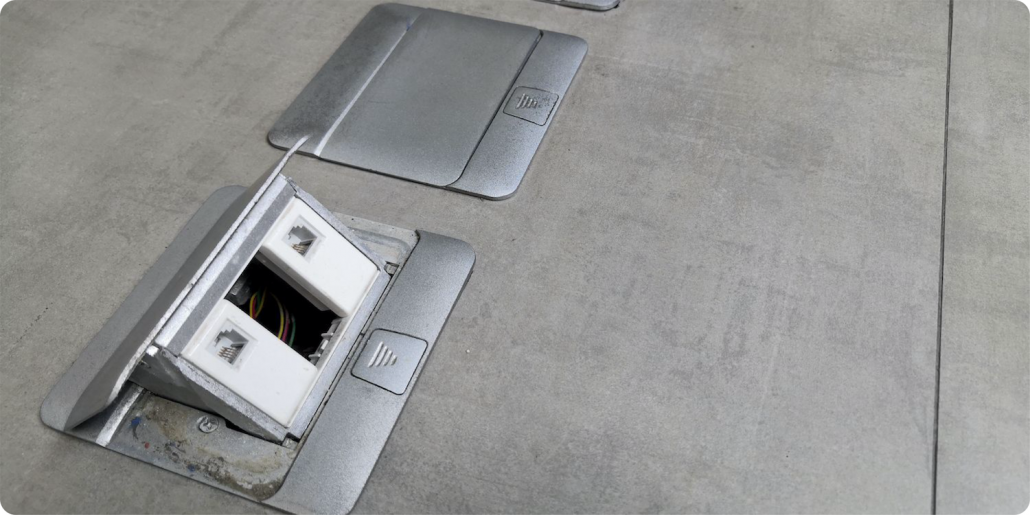January 15, 2021 | Cristina Dinulescu
When it comes to the electric panel in your home, there are a few basic things you should know about it. First of all, electricity is dangerous. For this reason, you shouldn’t interfere with it, unless it is necessary and you know what you are doing. Secondly, electrical panel labels are very important and come in handy, especially if they’re accurate, complete, and legible. If your electrician hasn’t done that already, you can adopt a systematic approach to help you label your home’s electrical panel directory quickly and efficiently.
For commercial buildings and offices, the National Electrical Code sets particular requirements when it comes to labeling electrical infrastructure, and residential panels are also required to do so. Even if it wasn’t a requirement, thoroughly mapping and labeling your home’s electrical panel is a great idea and here is why.
Do I Really Need Electrical Panel Labels?
Yes, you do. And here is why. The external wires coming in from the street and into your home are connected through the electrical panel. Consider it a distribution point, from where the utility wire enters your home and then divides into wires which service different rooms in your house.
Basically, every single fixture in your house is in fact connected to a fuse or circuit which runs to the electrical panel, which is also known as the service panel, electrical service panel, panel breaker panel, or fuse box (if you have an older home).
Inside the panel, there are either circuit breakers or fuses. Circuit breakers are rows of switches, which come with toggle levers, whereas fuses are rows of round knobs and screw-in fuses, which are similar to lightbulbs.
The role of these circuit breakers and fuses is to ensure safety and prevent fires. Circuit breakers, as well as fuses, interrupt the power if the electrical current in your house reaches unsafe levels. Simply put, when a circuit breaker trips or a fuse is blown, your house is telling you “enough”.
Because they prevent your house from burning down, you do want to know what breaker is connected to what circuit and so on.
How Will Electrical Panel Labels Help Me?
If you are wondering why you should care where the electrical panel is located or if the circuit breakers are adequately labeled, there are two main reasons: emergencies and electrical work.
- Emergencies
In case of an emergency, like a flood or a fire, you need to quickly get to your electrical panel to switch off the power. If there is a power outage, it really helps to know where your circuit breaker is. You wouldn’t want to search in the dark.
Also, if you smell something strange in your home, you could have a burning electrical component. So, in order to quickly react to an emergency, you should know where the panel is located. And, if the electrical problem is specific to one outlet, then you should know which breaker it corresponds to. This way, you can shut off that specific breaker instead of turning off the power in the entire home until a professional comes to investigate the problem.
- Electrical Work
Some people have the know-how to work on the electrical system in their own home. Although it’s always recommended to hire a professional, some people like to DIY smaller jobs, like replacing a receptacle for instance. However, to do that, you need to cut the power to that outlet. And so, you need to know which breaker connects to it.
Does Every Breaker In An Electrical Panel Need To Be Labeled?
The straightforward answer is yes. Without a question. While labeling a new electrical panel takes a few minutes, labeling an existing panel takes longer and it’s a task done best with two people. Still, having a complete directory will help ensure the safe operation of the electrical system, especially in the face of an emergency.
Every circuit and circuit modification should be distinctly identified as to its clear, obvious, and specific purpose. The identification should be included in a circuit directory, located on the face or the inside of the panel door. The directory itself should be durable enough to withstand the environment in which it is located.
Electrical panel labels should include a degree of detail that separates it from all other circuits. Even unused circuit breakers should be labeled. Labels must not be personal. These must be technical with reference to the house.
6 Steps To Create Electrical Panel Labels
Here are the 6 steps you can follow to quickly label your home’s electrical service panel.
1. Create Your House Floor Plan
You first need to draw a plan of your house. You can either make the plan floor-by-floor or room-by-room. You don’t need to make it too fancy. A few squares and rectangles to designate the walls of the rooms and the front and the backyard will do just fine.
Make sure to include every area that has electric service in your plan and this means the exterior of the house ( meaning the plugs on the porches, floodlights, the entrance lights), the attic, even the unfinished basement. If you have an older detached garage, with an electrical conduit running underground, make sure you include that too. Also, people tend to forget appliances that might run on separate circuits, such as the washer/dryer, the water heater, the security system, the wired smoke or carbon monoxide alarms, the doorbell, or the thermostats.
2. Identify Electrical Connections
It might sound strange, but it’s a good idea to take the floor plan and walk around the house. Mark all receptacles you find. You can even divide into fixtures, switches and outlets. And don’t forget to peek behind the furniture to check for hidden outlets.
Just to make things easier for you, develop a system to separate them into three categories and mark them correctly on the floor plan. You can use:
- Colors: choose three distinct colors to mark where the fixture, switches and outlets are.
- Letters: mark the fixtures with F, the switches with S and the outlets with O.
- Symbols: go with Circle for outlets, Square for switches and Triangle for fixtures.
3. Locate Your Electrical Service Panel
This step is either extremely easy or more difficult than expected. Electric service panels aren’t exactly great to look at because of their industrial appearance. This is why builders tend to hide them. So, when searching for the electrical panel, the best place to start would be the basement, storage room, laundry room, garage, closet or hallway. If the house has been through a number of renovations and additions, locating the service panel can be even more difficult. So, consider the exterior of the home as well, near the meter.
If you still can’t find it, try asking a neighbor. If you live in an area where houses are built in a similar fashion, chances are the service panel will be located in the same area. And note that your home may have more than one panel. A sub-panel may be installed to control the circuits in a different area.
4. Turn Everything On and Up!
One way to map all the circuits on a floor plan is to turn on every receptacle. Once you have entered a room, turn on all the ceiling and wall fixtures, the switches, lamps and electronics. You might have more outlets than electronics in a room. So, gather a few small gadgets, plug them in, map their circuit and pass on to the next one.
5. Map Circuits (Fuses) on House Floor Plan
One person should stay at the panel and another one in the rooms. Use a cell phone or your voice, depending on how far you are from each other. You should complete this step once the circuits or fuses have been assigned a number. If not, make sure you complete that step first.
The person standing close to the electrical panel shuts off breaker number 1 and the person in the room identifies the switches, outlets and fixtures and marks them with 1 on the floor plan. Then, ask the person close to the service panel to turn breaker 1 back on and move to number 2.
6. Create Home Electrical Panel Directory
Now that you have a completed map that correlates fixtures, outlets and switches with breaker numbers, make sure you add it to the inside door of the panel. That’s your directory and it needs to be visible.








